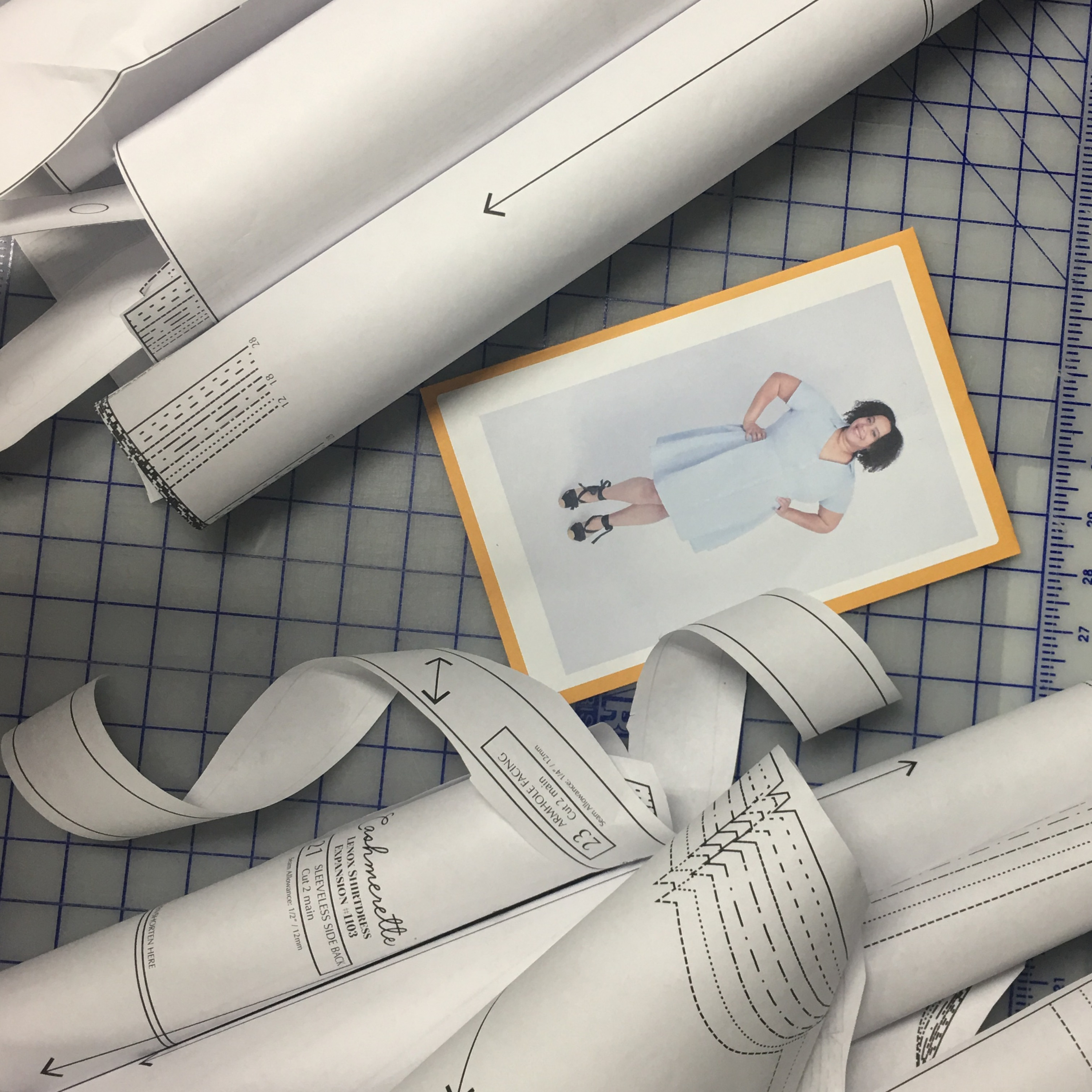Registration info: KINDRED SPIRITS: AN AFRICAN AMERICAN QUILTERS CONVERGENCE, June 15-17, 2023, Durham, NC
Sign up for the Black Women Stitch quarterly newsletter! Check out our merch too!
Leave a BACKSTITCH message and tell us about your favorite episode.
Join the Black Women Stitch Patreon
Black Women Stitch 2023 Wall Calendar
Tasha Henry
Tasha is a widely talented creative with specialties in sewing and dance. She likes to make videos about travel, sewing, hair, lifestyle, and whatever else catches her interests. She describes herself as a multifaceted person who is proud of her Panamanian and Jamaican heritage.
Lisa Woolfork
Lisa Woolfork is an associate professor of English specializing in African American literature and culture. Her teaching and research explore Black women writers, Black identity, trauma theory, and American slavery. She is the founder of Black Women Stitch, the sewing group where Black lives matter. She is also the host/producer of Stitch Please, a weekly audio podcast that centers on Black women, girls, and femmes in sewing. In the summer of 2017, she actively resisted the white supremacist marches in her community, Charlottesville, Virginia. The city became a symbol of lethal resurging white supremacist violence. She remains active in a variety of university and community initiatives, including the Community Engaged Scholars program. She believes in the power of creative liberation.
Insights from this episode:
- Tasha’s sewing story
- Tasha’s creative endeavors
- How her dance career boosts her creativity
- Preserving traditions
- Details about Tasha’s trip to Panama
- Details about the dress she made for New York Frocktails
- Tasha’s sewing space
- Insights into her creative process
- Getting inspiration and motivation from her sewing space
Quotes from the show:
- After losing weight: “I was not rich, and I can’t go out and buy a whole new wardrobe, so I just had it in my mind that I was gonna go and find a sewing machine and was gonna fix all my clothes to fit me or change them” —Telltale Tasha in “Stitch Please”
- On Tasha’s first piece: “You got a lot of good love out of it. It’s clear, when I wear this, I feel good. I love how I look in this garment, and that is the kind of love that we can generate through the love we have for making the things we wear” —Lisa Woolfork in “Stitch Please”
- “When you have a multi-generational attachment to something, that’s excellent because it keeps the thing moving forward, you can sustain the traditions, but you can also practice them in a way and make sure they are preserved and pushed forward” —Lisa Woolfork in “Stitch Please”
- On Tasha’s creative process: “When you walk into your space, you step into the fullness of a creative power” — Lisa Woolfork in “Stitch Please”
- On Tasha’s sewing space: “It really does pull my creativity even when I don’t want to sew. Sometimes I just come in here and play with the fabric and see it happen” — Telltale Tasha in “Stitch Please”
- “The advice I would have to help people get their stitch together would be to not create out of a process of desperation, or stress, but to create from a place of love and excitement (…) so that you can continue to enjoy what you are creating” — Telltale Tasha in “Stitch Please”
Stay Connected:
Lisa Woolfork
Instagram: Lisa Woolfork
Twitter: Lisa Woolfork
The Telltale Tasha
Website: The Telltale Tasha
Youtube: The Telltale Tasha
Instagram: Tasha (@thetelltaletasha)
This episode was produced and managed by Podcast Laundry.
Sign up for the Black Women Stitch quarterly newsletter
Check out our merch here
Leave a BACKSTITCH message and tell us about your favorite episode.
Join the Black Women Stitch Patreon
Check out our Amazon Store
Stay Connected:
YouTube: Black Women Stitch
Instagram: Black Women Stitch
Facebook: Stitch Please Podcast


